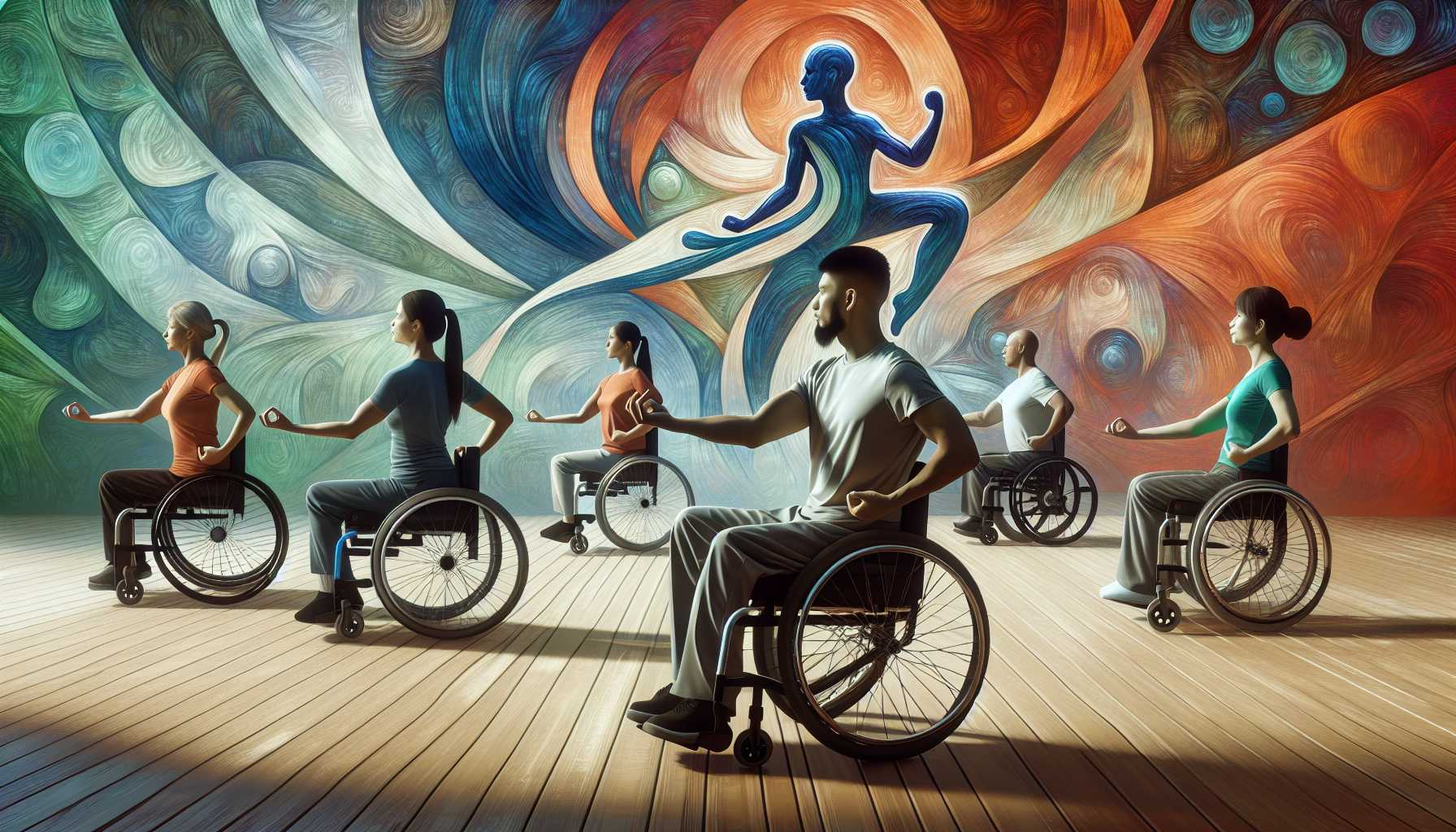
Wheelchair Tai Chi Chuan Program Promotes Health and Community
The article discusses a unique adaptation of Tai Chi Chuan designed for individuals in wheelchairs.
Zhè piān wénzhāng tǎolùnle yī zhǒng wèi lún yǐ rénshì shèjì de tàijí quán dútè shìyì.
这篇文章讨论了一种为轮椅人士设计的太极拳独特适应。
This program aims to make the benefits of Tai Chi, such as improved balance, flexibility, and mental well-being, accessible to wheelchair users.
Gāi chéngxù zhǐ zài shǐ lún yǐ yònghù nénggòu xiǎngshòu tàijí de hǎochù, lìrú gǎishàn pínghéng, línghuó xìng hé xīnlǐ jiànkāng.
该程序旨在使轮椅用户能够享受太极的好处,例如改善平衡、灵活性和心理健康。
By modifying traditional Tai Chi movements, participants are able to engage in physical activity that enhances their overall health and promotes a sense of community.
Tōngguò xiūgǎi chuántǒng de tàijí dòngzuò, cān yù zhě nénggòu cān yù zēngqiáng zhěngtǐ jiànkāng hé cùjìn shèqū gǎn de tǐyù huódòng.
通过修改传统的太极动作,参与者能够参与增强整体健康和促进社区感的体育活动。
The Wheelchair Tai Chi Chuan program incorporates principles of accessibility and inclusivity, demonstrating that physical limitations do not preclude participation in wellness activities.
Lún yǐ tàijí quán xiàngmù rónghé le kějíxìng hé bāoróngxìng de yuánzé, biǎomíng shēntǐ xiànzhì bìng bù fáng'ài cān yù jiànkāng huódòng.
轮椅太极拳项目融合了可及性和包容性的原则,表明身体限制并不妨碍参与健康活动。
Participants report feeling a sense of empowerment and connection with others, fostering not just physical, but also emotional and social benefits.
Cān yù zhě bàogào gǎnjué dào yī zhǒng zēngqiáng nénglì hé yǔ tārén liánxì de gǎnjué, bù jǐn cùjìn shēntǐ, hái cùjìn qínggǎn hé shèhuì yìchù.
参与者报告感觉到一种增强能力和与他人联系的感觉,不仅促进身体,还促进情感和社会益处。
The program exemplifies a holistic approach to health, emphasizing the importance of adaptive practices in any physical activity.
Gāi xiàngmù tǐxiànle quánmiàn jiànkāng de fāngfǎ, qiángdiào le zài rènhé tǐyù huódòng zhōng shìyìng xìng shíjiàn de zhòngyàoxìng.
该项目体现了全面健康的方法,强调了在任何体育活动中适应性实践的重要性。
Overall, the initiative showcases the potential of Tai Chi as a therapeutic practice for those with mobility challenges, highlighting both the physical and psychological advantages.
Zǒngtǐ ér yán, gāi chàngyì zhǎnshìle tàijí zuòwéi yī zhǒng zhìliáo shíjiàn de qiánlì, yóuqí shì zhēnduì yǒu xíngdòng zhàng'ài de rén, tūchū shēntǐ hé xīnlǐ de yōushì.
总体而言,该倡议展示了太极作为一种治疗实践的潜力,尤其是针对有行动障碍的人,突出身体和心理的优势。
It serves as an inspiring model for how traditional practices can be reimagined to support diverse populations, ultimately promoting health and well-being for all individuals, regardless of their physical abilities.
Tā wèi rúhé chóngxīn gòusī chuántǒng shíjiàn yǐ zhīchí bùtóng rénqún tígōngle yī gè gǔwǔ rénxīn de diǎnfàn, zuìzhōng cùjìn suǒyǒu rén de jiànkāng hé fúzhǐ, wúlùn qí shēntǐ nénglì rúhé.
它为如何重新构思传统实践以支持不同人群提供了一个鼓舞人心的典范,最终促进所有人的健康和福祉,无论其身体能力如何。
Based on this article
